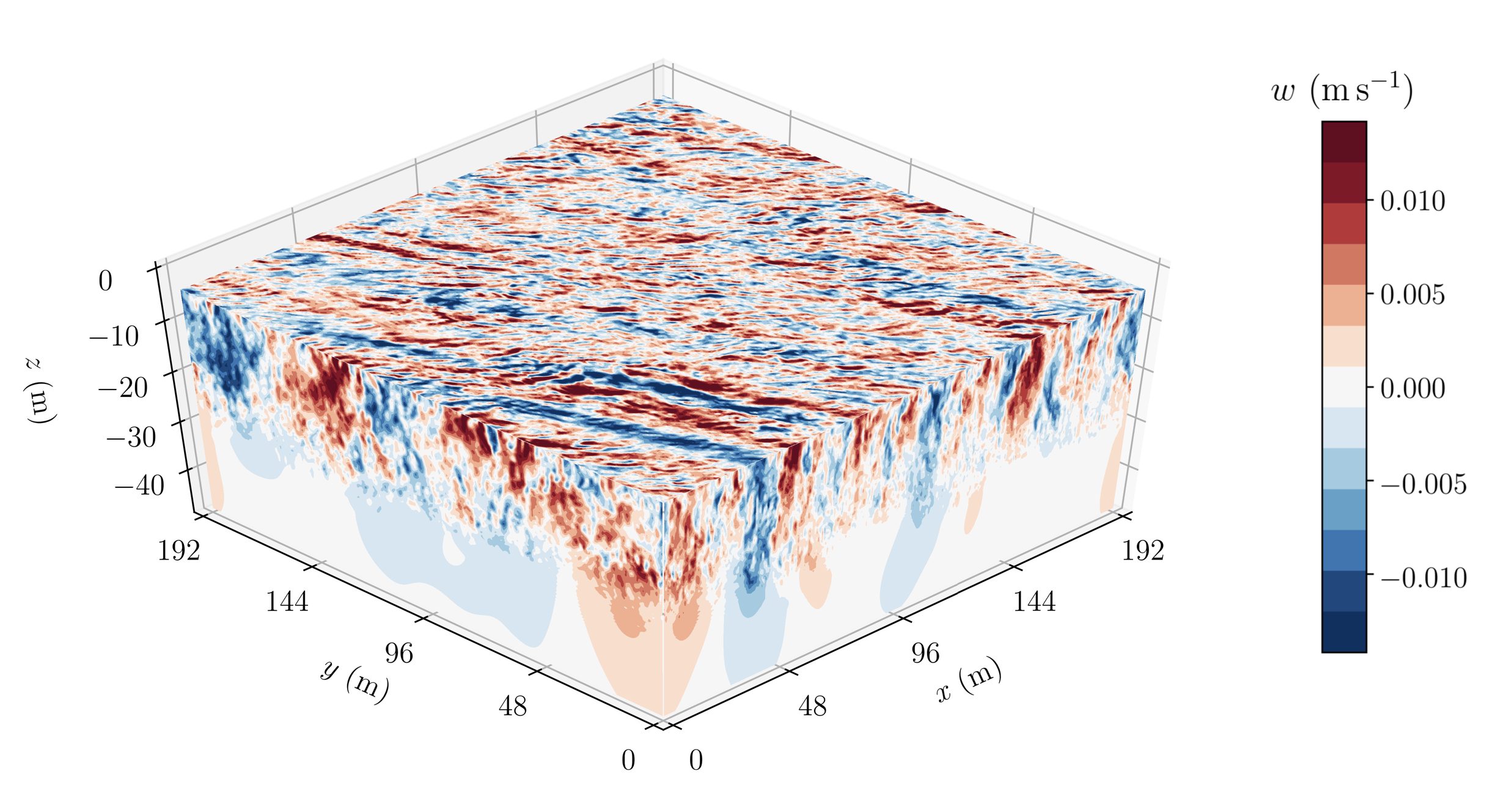A few things I work on
If you’d like to chat more about my work, email me at gregory.leclaire.wagner@gmail.com.
See my github for real-time updates on my software projects.
Oceananigans and ClimaOcean
I lead the development of the ocean modeling software Oceananigans, and the ocean component it’s based on, ClimaOcean. Oceananigans is written in the Julia programming language and accelerated by GPUs. It’s simple and intuitive enough for idealized classroom-ready tutorials, but also 10-50x faster than existing models, enabling high-resolution large eddy simulations in complex domains and realistic mesoscale-turbulence-resolving global ocean simulations. Here’s a screenshot from the Oceananigans documentation:

The Oceananigans and ClimaOcean community is hard at work on global coupled ocean and sea ice simulations, biogeochemistry simulations for verifying marine carbon dioxide removal, and making Oceananigans differentiable to enable the the next generation of hybrid AI/physics ocean simulations.
ClimaSeaIce
ClimaSeaIce is new software for simulating sea ice thermodynamics and mechanics that builds off Oceananigans. As with Oceananigans, our goal is to develop software that is flexible and hackable enough to be used like a research code but fast and sophisticated enough to power the sea ice component of a new climate model.
Turbulent ocean mixing
I develop models for turbulent mixing at scales between 1 and 100 meters. My work combines “traditional” theory-based model development with modern data-driven techniques for parameter estimation and uncertainty quantification.
Surface gravity waves and wave-turbulence interactions
Frothing, whitecapping, undulating surface waves are the top of the ocean surface boundary layer. I collaborate with experimentalists and observationalists to develop, improve, and validate theories and numerical simulations of near-surface turbulence interacting with surface waves. The image below depicts surface-wave-affected turbulence simulated by Oceananigans.

Information about how to produce this image can be found on github, or in this paper.

